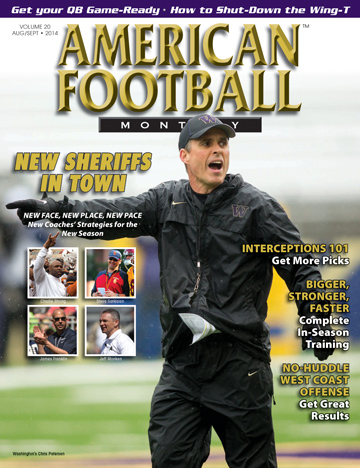Article CategoriesAFM Magazine
|
Taking the No-Huddle Offense to the West Coast – Combining the West Coast offense with an up-tempo, no-huddle system can result in a powerful running and passing attack.by: Daren WilkinsonOffensive Coordinator, Colorado State University-Pueblo © More from this issue Football is a sport that runs in cycles. Offenses and defenses are constantly inventing and re-inventing themselves to match and overtake what the other side of the ball is doing. Systems and styles come and go and then are cycled back again. The constant on either side of the ball, no matter the generation or system, is the importance of a running game. Every defensive coordinator’s first job in preparing for a game is to figure out how to contain the running game. Every offensive coordinator’s first priority each week is to figure out how to successfully run the football. Toughness and attitude are the primary ingredients to getting these things accomplished. Last fall we continued to run the same West Coast system that the players and coaches knew. We continued to believe in the principles that toughness, attitude, and....The full article can only be seen by subscribers.
|
|
|||||||
| HOME |
MAGAZINE |
SUBSCRIBE | ONLINE COLUMNISTS | COACHING VIDEOS |
Copyright 2025, AmericanFootballMonthly.com
All Rights Reserved





